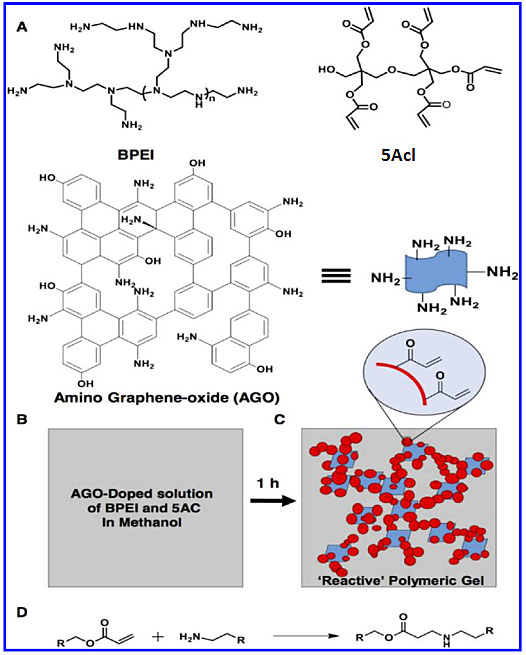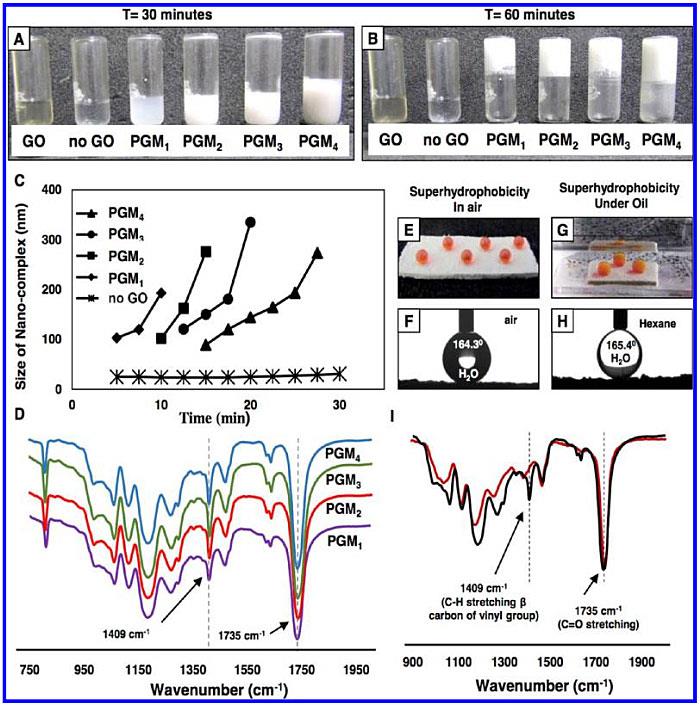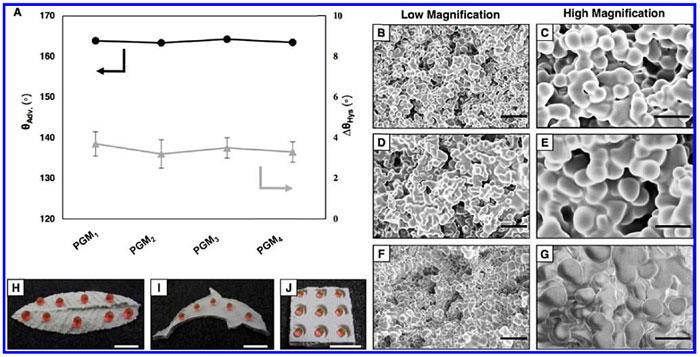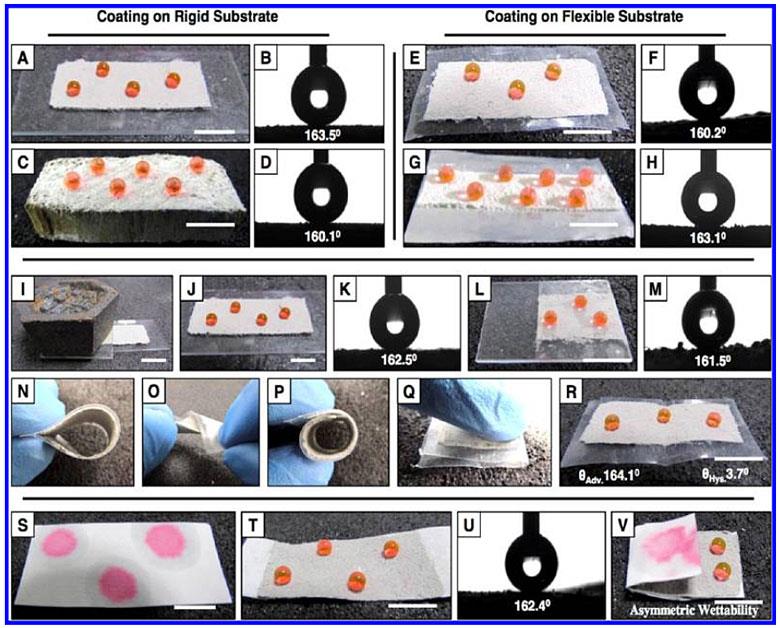

Contact: Manager Yang
Hotline: 950-4048-3964 (free)
Tel: 0510-85386636
Mobile: 18011518665
Shangmeng Technology Wuxi Co., Ltd.
Address: A1-602, Tianan Smart City, No. 228 Linghu Avenue, Xinwu District, Wuxi City, Jiangsu Province
Surfaces of materials with special wetting properties are widely found in nature, such as lotus leaves, rose petals, shark skin, and the like. At present, based on the bionic principle, the chemical composition of the surface of the material and the micro-nanotopography can impart unique infiltration properties to the surface of the material. Among them, the superhydrophobic surface with surface static water contact angle ≥150° and rolling angle ≤10° has wide application in the fields of regulating protein crystallization, liquid directional transport, water collection, small molecule controlled release, antifouling coating and so on. However, the traditional super-hydrophobic interface based on the micro-nano-morphology structure combined with the introduction of ultra-thin low-surface energy coatings has obvious deficiencies against physical/chemical interference, coating flexibility, performance stability and durability. Significant improvements in the durability of the surface of the super-wetting material can be achieved by introducing strategies such as superabrasive components and self-healing components. However, the super-infiltration interface construction process of this type of strategy is often cumbersome, which greatly limits its large-scale practical application development.
Constructing a material system with a super-wetting property on the body and surface is the most ideal strategy to improve the bottleneck of its application stability. Recently, the Uttam Manna research team of the Indian Institute of Technology's Guayati Branch (IITG) used branched polyethyleneimine (BPEI), dipentaerythritol penta/hexaacrylate (5Acl) and amino-functionalized graphene oxide (AGO) as raw materials. Based on the 1,4-conjugate addition reaction between amino group and acrylate, a self-supporting bulk material having excellent superhydrophobic properties on both the surface of the material and the interior of the substrate is prepared very simply without a catalyst. The superhydrophobic material exhibits stable superhydrophobic properties in both air and oil phases, while the material has excellent mechanical stability, chemical resistance and durability.

Schematic diagram of the chemical composition and preparation process of a new superhydrophobic material. Image source: ACS Appl. Mater. Interfaces
It was found that BPEI and 5Acl were used as raw materials for the conjugate addition reaction, and the system could not form a gel. When AGO was added, the system was transformed into a gel state within 1 h. By using a non-amino functionalized graphene oxide for comparative experiments, it can be confirmed that the 1,4-conjugate addition reaction of the amino group on the surface of the GO with 5Acl is the key to the conversion of the system into a gel. At the same time, the rate of gelation of the system can be adjusted by the amount of AGO added to the conditioning system. Dynamic light scattering (DLS) tests showed that AGO-BPEI/5Acl nanocomposites could be formed after the addition of AGO at the initial stage of gelation, and the size of the nanocomposites gradually increased with time. At the same time, infrared spectroscopy (FTIR) tests indicate residual unreacted acrylate functional groups in the gel system, which facilitates further hydrophobic modification of the gel system using organic small molecules with amino functional groups. After modification by decylamine modification, the prepared gel material exhibits excellent superhydrophobic properties in air or under oil, the water droplet advancing angle exceeds 160°, and the rolling angle is about 3°.

System gelation process and internal mechanism investigation. Image source: ACS Appl. Mater. Interfaces
The stress-strain curve test shows that the superhydrophobic material has excellent mechanical properties, and its mechanical properties can be conveniently adjusted by adjusting the amount of AGO added. When the AGO content is low, the hardness of the material is large; as the AGO content increases, the elasticity of the system increases. At the same time, the test shows that the superhydrophobic material system has excellent mechanical stability. In the process of cyclic compression (shape change 80%, 1000 times) deformation, folding, distortion, distortion, etc., the superhydrophobic property of the system remains basically unchanged.

Testing of mechanical properties and mechanical stability of new superhydrophobic materials. Image source: ACS Appl. Mater. Interfaces
The researchers showed through systematic comparison experiments that although the amount of AGO added had no significant effect on the macroscopic hydrophobic properties of the system, the amount of AGO had a significant effect on the microstructure of the system, which further affected the mechanical stability and superhydrophobic stability of the material system. . In addition, based on the excellent mechanical properties and toughness of the superhydrophobic material system, the material system can be easily molded into super-sparse coatings of different shapes. At the same time, the system test after slicing the material shows that the material system and the material surface also have excellent superhydrophobicity, abrasion resistance and chemical resistance. In addition, the material system exhibits super-hydrophobic super-lipophilic properties and can be applied to the field of oil-water separation.

The effect of AGO content on the hydrophobic properties and morphology of the system. Image source: ACS Appl. Mater. Interfaces
When the AGO superhydrophobic material system has not been converted into a semi-solid gel, the material system can coat super-hydrophobic coatings with excellent properties on the surface of different materials such as glass, wood, filter paper, metal, and plastic. This makes the new superhydrophobic material have great development prospects in practical applications.

AGO-superhydrophobic coating for coating applications on different substrates. Image source: ACS Appl. Mater. Interfaces
--to sum up--
Uttam Manna's research team based on the introduction of aminated graphene oxide two-dimensional materials combined with a convenient 1,4-conjugate addition reaction, prepared a gel material with excellent superhydrophobic properties on both the surface and the interior. The super-sparse material exhibits excellent mechanical properties, excellent mechanical stability/chemical stability, and its ability to be coated on different substrates, which has broad application prospects in practical applications such as self-cleaning, anti-corrosion, oil-water separation. .
Source: X-Mol
下一条: The new catalyst for hydrogen batteries is only one percent of the price of platinum catalysts.
Address:Tianan Smart City A1-602, No. 228 Linghu Avenue, Xinwu District, Wuxi, Jiangsu, China TelePhone:0510-85386636 Fax:0510-85384339 E-mail:info@solmontech.com
KeyWord: